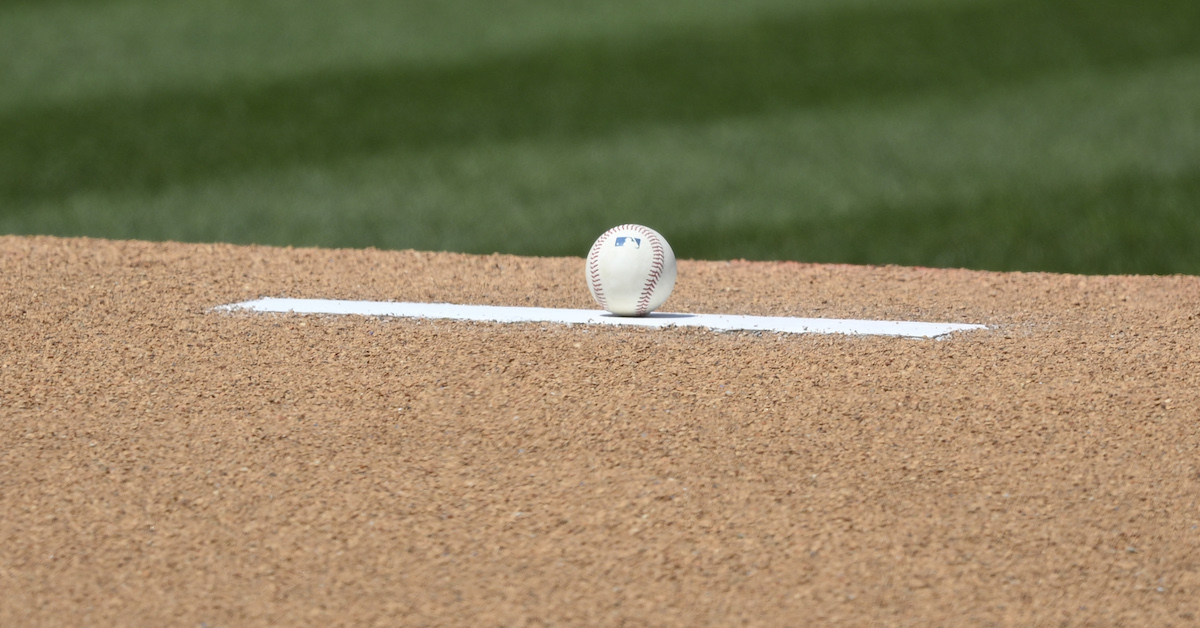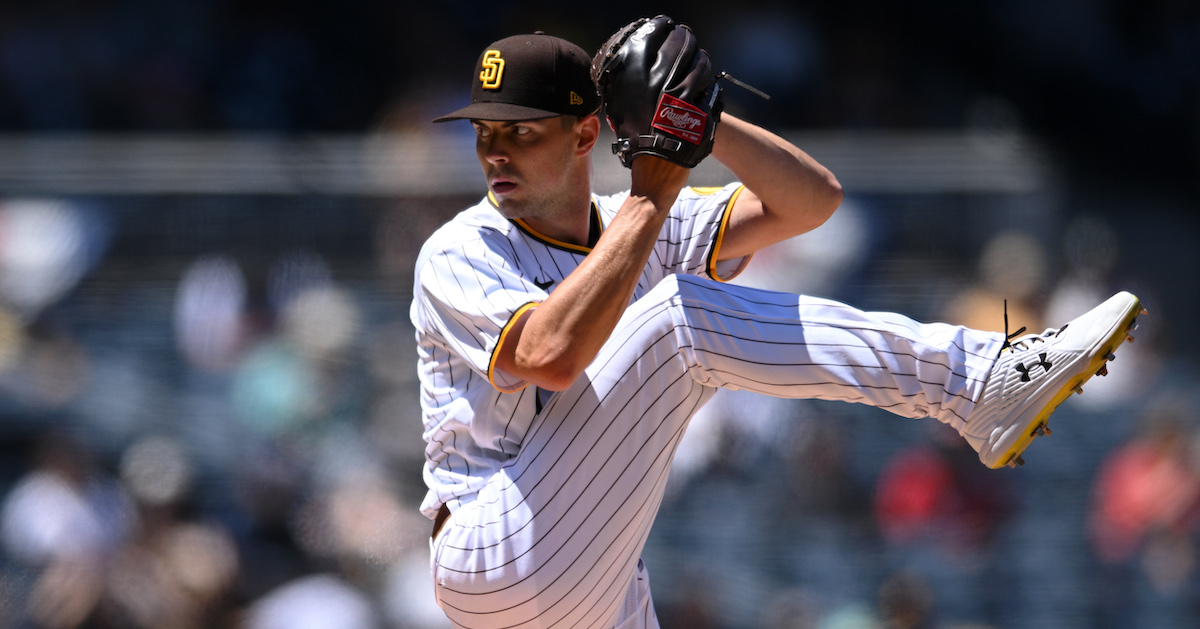Author Archive
Who Makes the Best Swing Decisions in Baseball?

Last week, when I was waxing poetic about Jeff McNeil’s ability to wait for a good pitch and then drop it into left for a single, I made an offhand mention to the player with the best swing decisions of 2021: Mike Tauchman, who doesn’t even play in the major leagues anymore. Then I moved on.
That wasn’t an accident. It’s what we in “the business” (no one calls it this) like to think of as a preview. I got multiple texts (another pro writer tip: “multiple” sounds better than “two”) from friends this weekend asking where the whole list of hitters was. That list is right here!
As a quick refresher, the idea here is to take every swing decision a hitter makes and compress them into one number. Every hitter who saw at least 50 pitches in each of the four attack zones (heart, shadow, chase, waste) is on the list. I took each of those rates and gave them league-average production for those decisions. The result looks like this, stated in terms of run value per 100 of the relevant zone/decision combination (take a waste pitch, say, or swing at a pitch in the shadow zone):
| Zone | Swing | Take |
|---|---|---|
| Heart | 0.42 | -5.92 |
| Shadow | -3.62 | -0.06 |
| Chase | -8.09 | 6.07 |
| Waste | -12.29 | 5.63 |
From there, I assumed a league-average percentage of pitches in each zone. Combined with each hitter’s swing rates, that let me produce an overall run value assuming an average rate of pitches in each zone.
Here’s a quick guide on how to interpret these numbers. For each hitter, there are three numbers. The first two are just the same statistic said different ways. The first metric, “RV/100,” is how many runs above or below average each hitter on the list would be, per 100 pitches, if they got exactly average results on every zone/decision combination. The higher the number, the better positioned a hitter is to succeed, by taking tough pitches and swinging at good ones.
Read the rest of this entry »
Jeff McNeil, Secret Strike Zone Wizard

Jeff McNeil has been pretty good so far this year. He’s hitting .328/.388/.492, good for a 163 wRC+. He’s starting all over the field, making the Mets’ complicated lineup decisions easier. That’s great! That’s all good. Today, though, I’m more interested in the fact that he’s displaying strike zone judgment usually reserved for Juan Soto, Joey Votto, and God.
McNeil has always been one of the most aggressive hitters in baseball. That hasn’t changed this year. Here are the hitters who swing the most at pitches in the strike zone:
| Player | Z-Swing% |
|---|---|
| Jeff McNeil | 87.4% |
| Avisaíl García | 85.1% |
| Corey Seager | 85.1% |
| Tim Anderson | 84.0% |
| Ryan Mountcastle | 83.9% |
This is not news. From 2018-21, his career prior to this year, McNeil led baseball in zone swing rate. This year, he leads baseball in zone swing rate. He is continuing to do what he’s always done! More at 11.
But wait, there is more. You know how these swing-happy types work. Take a look at the list again. García has a career 6.3% walk rate and it’s heading lower this year. Anderson has a career 3.5% walk rate. Mountcastle hardly walks for a slugger. Seager – well, okay, Seager is just great. But swinging a lot at pitches in the strike zone also generally means swinging a lot at pitches outside of the strike zone.
Indeed, García and Anderson are the two hitters chasing the most pitches outside the zone. Mountcastle is in the top 15. Seager – yeah, still great. But McNeil is nowhere near that! He’s chasing only 29.1% of pitches outside the zone, a lower rate than the league as a whole and by far a career low. His in-zone swing rate, by the way, is a career high. Did Jeff McNeil crack the code? Read the rest of this entry »
The Continued Decline of the First-Pitch Fastball

Back in my day — the mid-2000s — baseball was a simpler game. Batters socked dingers, with or without the use of performance-enhancing drugs. Teams batted slap hitters second, fast hitters first, and aging sluggers third. Catchers were valued by their bat and their throwing arm, none of this framing nonsense. And pitchers? Pitchers helped everybody out by throwing fastballs all the time, particularly on the first pitch. Seriously, take a look at this graph:

Year after year, pitchers have examined the mix of pitches they throw to lead off at-bats and decided to lop a few fastballs off the top. It’s not quite monotonically decreasing; there have been tiny upticks in a few years, and 2008 was lower, potentially due to classification issues in the first year of data. But this is as close as a trend can get to slapping you in the face.
The first pitch of an at-bat isn’t always the most important one — in a 3–2 count, one borderline pitch can be the difference between a baserunner and an out — but the difference between a 1–0 count and an 0–1 count is huge. That’s why pitchers have historically leaned on fastballs, which are easier to control; throwing a pitch outside the zone is a sure way to end up behind in the count.
Read the rest of this entry »
An Early Look at MacKenzie Gore’s Pitch Data

MacKenzie Gore is scheduled to make his third start of the season today. He’s been excellent, if low on stamina, in his first two starts: 10.1 innings, 10 strikeouts, four walks, and two earned runs. In a year of low offense and young pitching, this would be an unexceptional beginning – if he weren’t MacKenzie Gore, erstwhile top pitching prospect in baseball.
Lead prospect analyst Eric Longenhagen has written about Gore extensively. If you’re looking for a deep, nuanced look at all the mechanical changes that have sent Gore from can’t-miss to passed over in favor of Jake Arrieta, Eric has you covered. If you’re looking for some data-driven speculation based on his first two big league starts, on the other hand, boy do I have what you’re looking for. Read the rest of this entry »
How Bigger Bullpens Are Constraining Offense

This is a story about persistence. I thought I had an interesting way of looking at the marked decline in scoring this year so far; as it turns out, I was wrong. A further investigation, however, revealed that another possible culprit was right around the corner. Does it explain the entire decline in offense? Most certainly not. But I’m interested nonetheless, and I hope you will be too.
If you’ve followed baseball in the past five years, you’re probably used to asking questions about league-wide offense early in the season. Major League Baseball has done itself no favors here; the composition of the baseball keeps changing, and home run rates fluctuate wildly as a result. The same is true this year: despite the adoption of a universal DH, offense is down across the board.
The usual suspects are certainly part of the problem. Pitchers keep throwing harder. Putting a humidor in every stadium affects home run rates in unpredictable ways and might suppress home run rates early in the season. The league used two different baseballs last year, and drag coefficient is up this year. Starters are going fewer and fewer innings, giving batters fewer looks at them a third time through the order.
I think that all of those things have something to do with bad offense. But I thought of another potential cause, one I could investigate without learning fluid dynamics. One of the side bargains between the league and the MLBPA after this offseason’s lockout was for expanded rosters early in the season. Teams are allowed to roster 28 players throughout the month of April. On May 30, that number will revert to the standard 26 — this deadline was recently pushed back from May 1. In addition, teams can carry any number of pitchers on their roster until May 1. After that, they’ll be limited to 14, and 13 after May 29.
Read the rest of this entry »
Modern Baseball, Fast and Slow, For Better and (Sometimes) Worse

If you were looking for fast-paced, high-stakes baseball action, the tenth inning of Saturday’s Rays-Red Sox clash had everything you could ask for. Scoring? Five runs crossed the plate. Drama? There was a walk-off hit. Balls in play? The Red Sox hit a triple, and the Rays scored a run by combining a balk and a throwing error. Like home runs? It had one of them too.
If you were looking for grind-it-out, low-scoring, perfectly pitched baseball, the other nine innings would have been more your speed. Boston and Tampa Bay combined for two hits and seventeen strikeouts. They used ten pitchers. Runs? Only four runners so much as reached second base.
Which one is modern baseball? They both are. If you wish baseball had more balls in play, with more bunts and steals and plays at the plate, I can’t blame you. If you wish it had more dominant starting pitchers and more seven-inning starts that end with a mound conference and a manager talked into leaving his ace out there for just one more batter, I can’t blame you. But the game being played today is just as captivating, the performances just as impressive. They just come in different shapes and sizes.
Read the rest of this entry »
Two Managerial Decisions and Another Questionable Intentional Walk

As you may already know, I’m something of an intentional walk connoisseur here at FanGraphs. When questionable ones occur, particularly in the playoffs, I like to delve into the specifics to figure out which ones are good decisions, which ones are close calls, and which ones are just plain silly.
Earlier this week, I wrote about Joe Maddon’s bases-loaded intentional walk, which was about as far on the silly end of the spectrum as you can get. Today, I’m going to cover the other notable intentional walk of the week: the Yankees giving Miguel Cabrera a free pass on Thursday. Then, as a bonus, I want to talk about Cardinals manager Oli Marmol and a clever thing he did that might escape notice if you aren’t watching closely.
Read the rest of this entry »
Shohei Ohtani Is Getting Better

Shohei Ohtani was up to some Tungsten Arm O’Doyle antics last night. He batted twice before throwing his first pitch of the game, something no one had accomplished in the recorded history of baseball. He bunted for a hit in the sixth inning while throwing a perfect game, almost assuredly the first time any pitcher has done that. That’s par for the course for Ohtani.
If you spend too long thinking about his record-breaking unicorn status, though, you might miss this fact: Ohtani has never looked better on the mound. Last year, he was a hitter first and a pitcher second; his 3.18 ERA over 130 innings was certainly impressive, but it wasn’t the equal of his .257/.372/.592 batting line and 46 home runs. This year, he’s off to a slower start with the bat — not a poor start, to be sure, but not the equal of last season. On the mound, though, he’s looking better and better. If 2021 was the year of Ohtani (hitter-first), 2022 might be the year of Ohtani (pitcher-first), with last night’s brush with perfection signaling his arrival. Read the rest of this entry »
